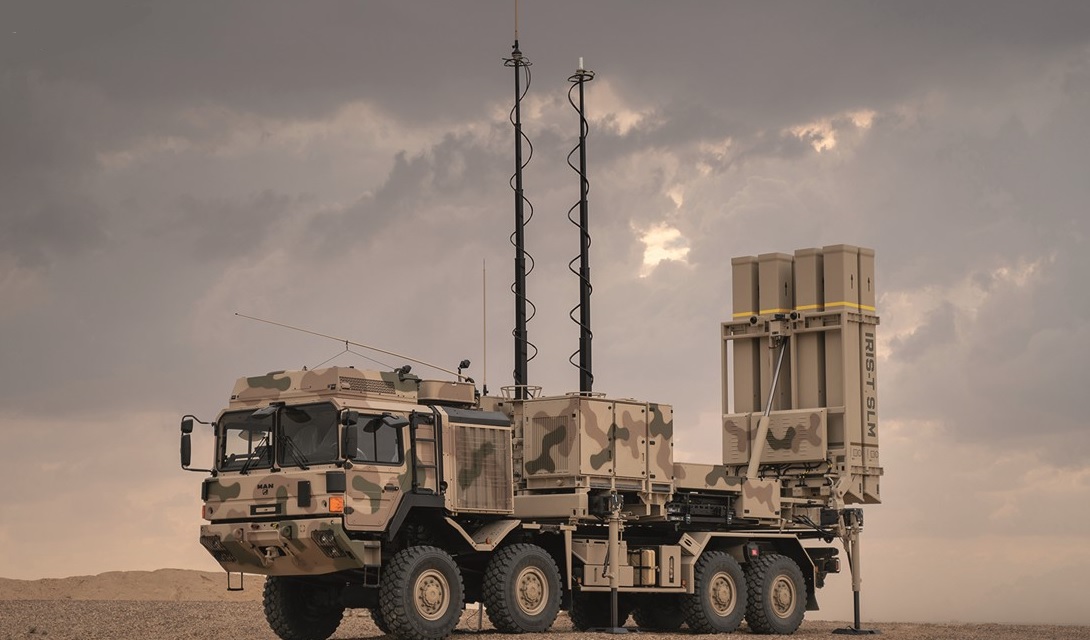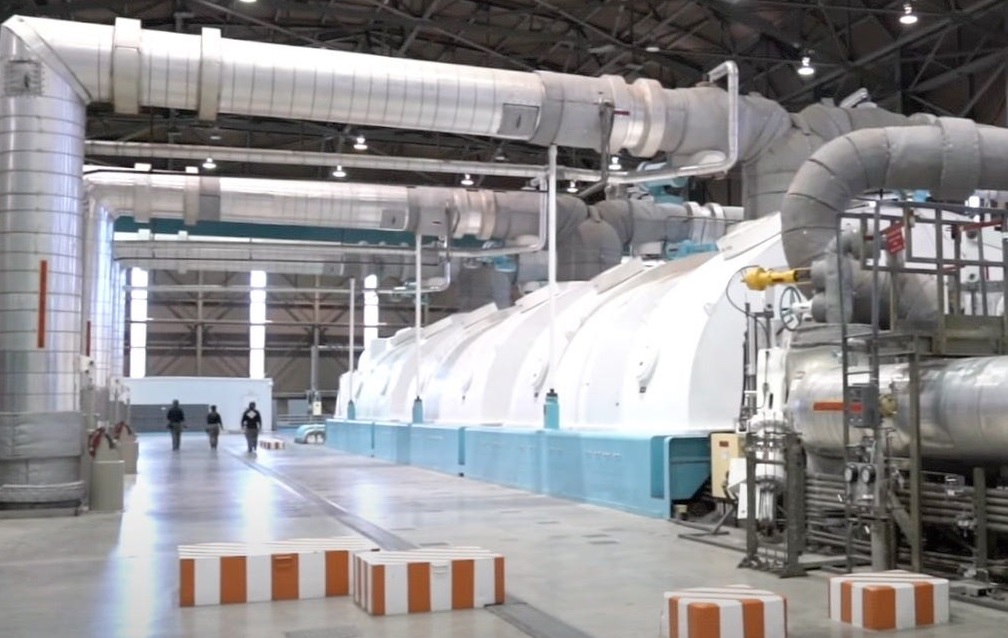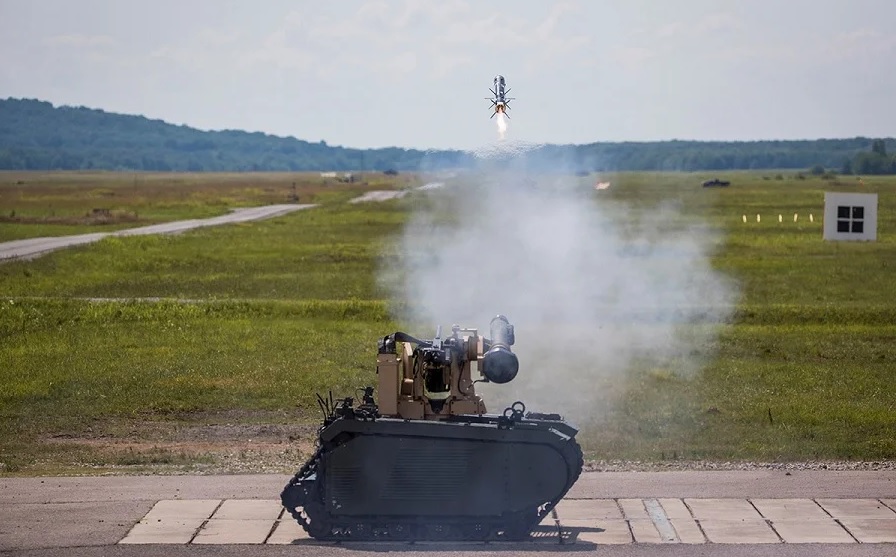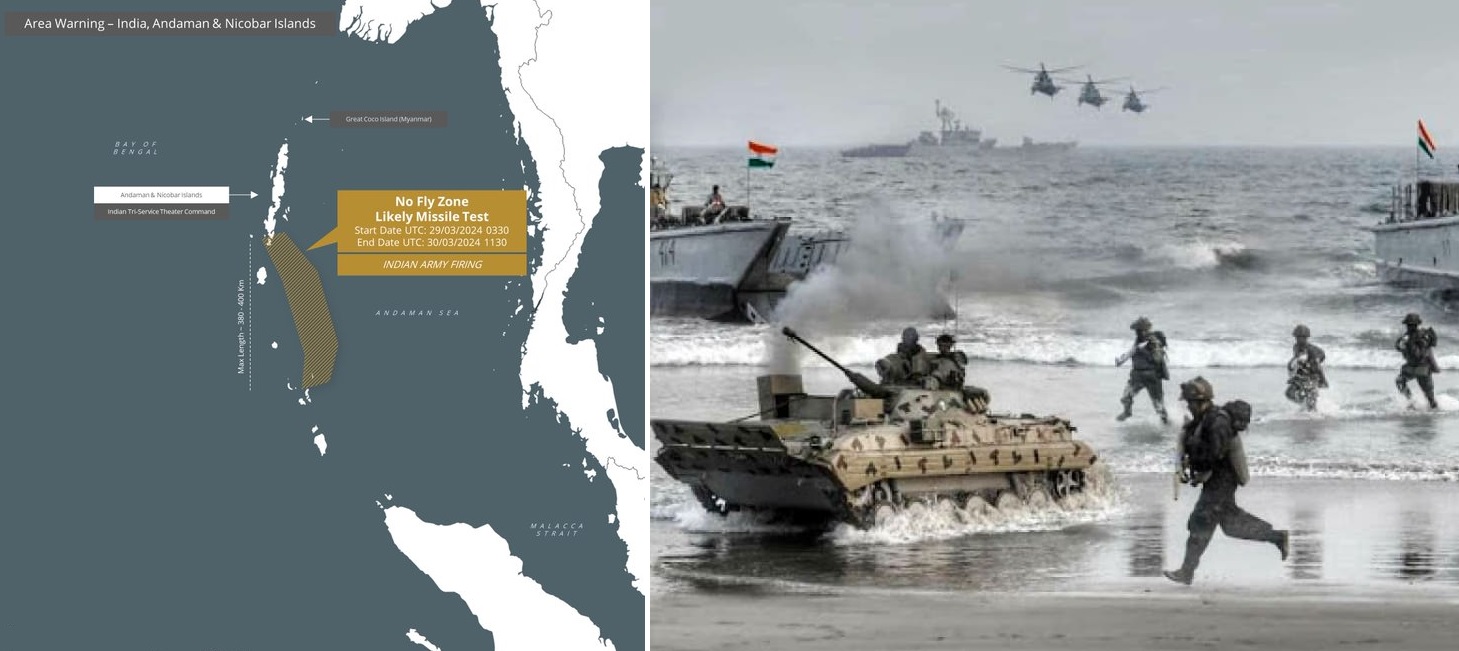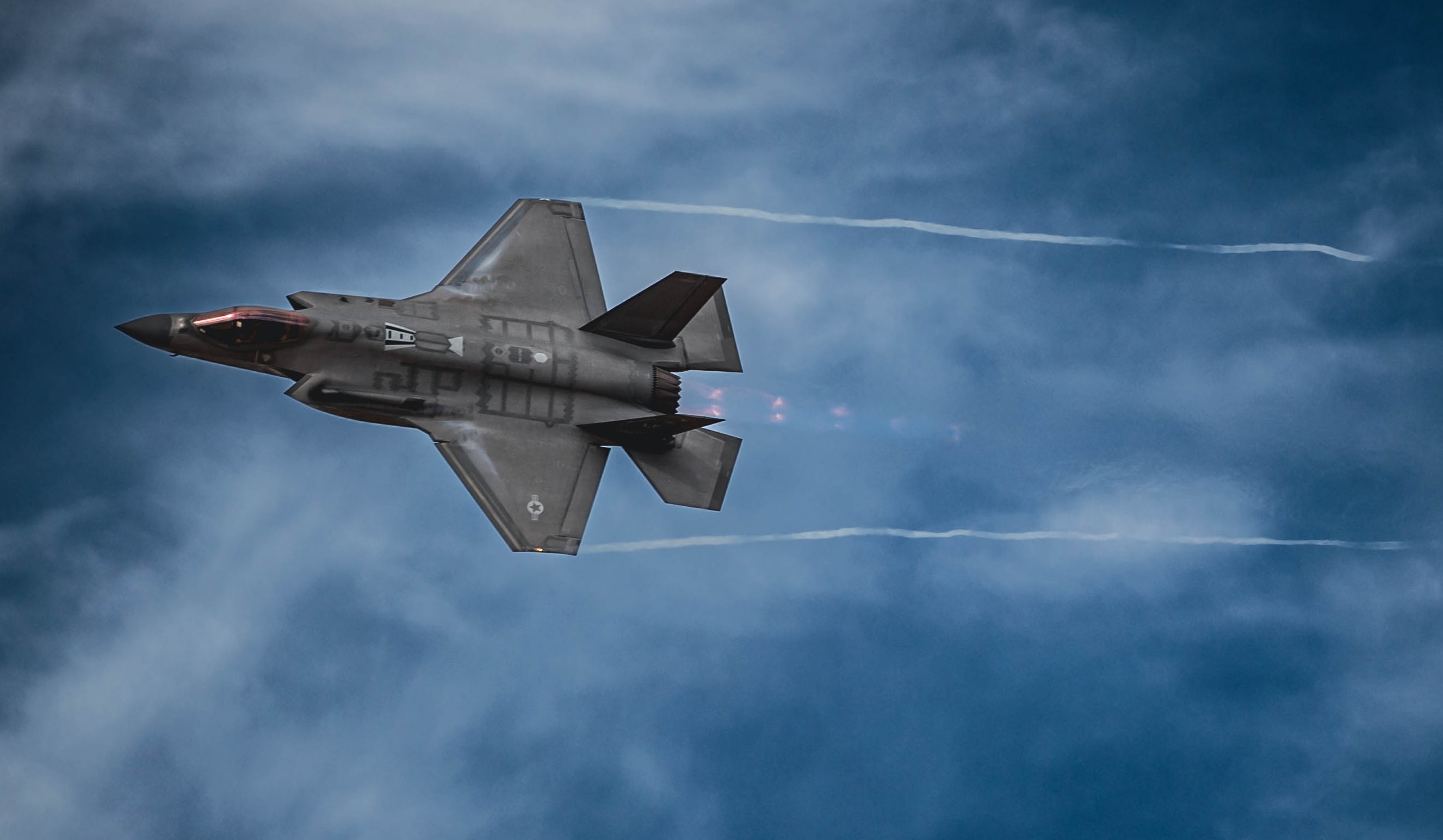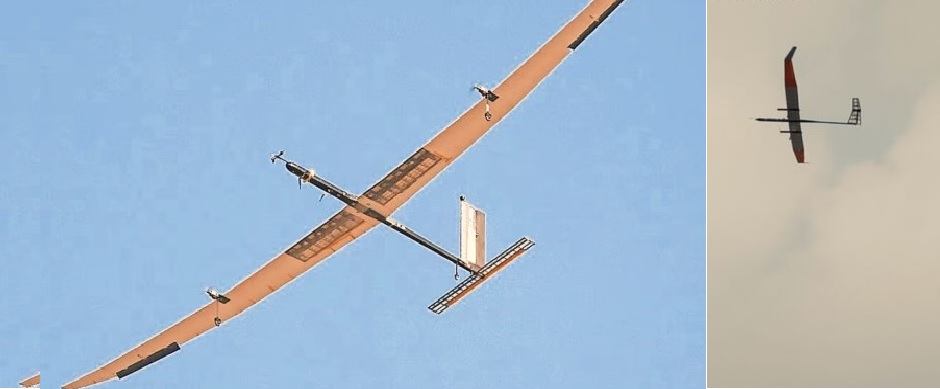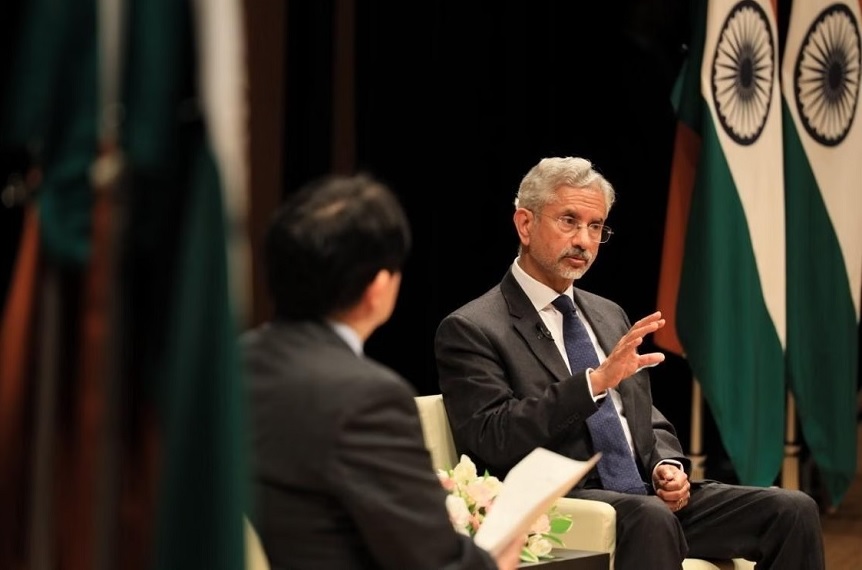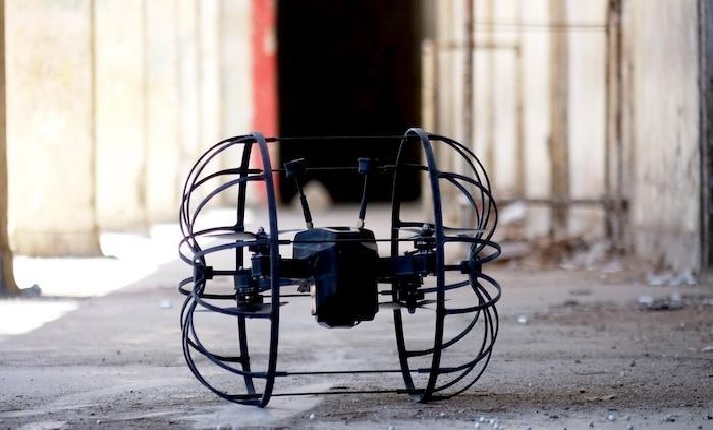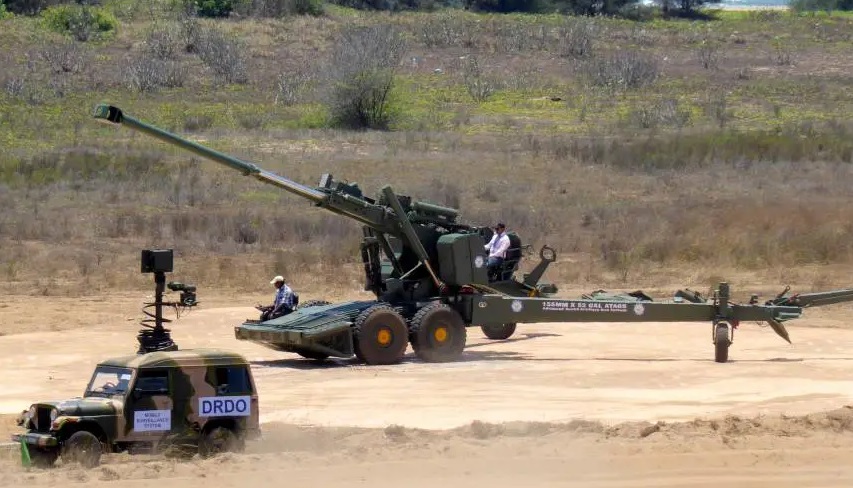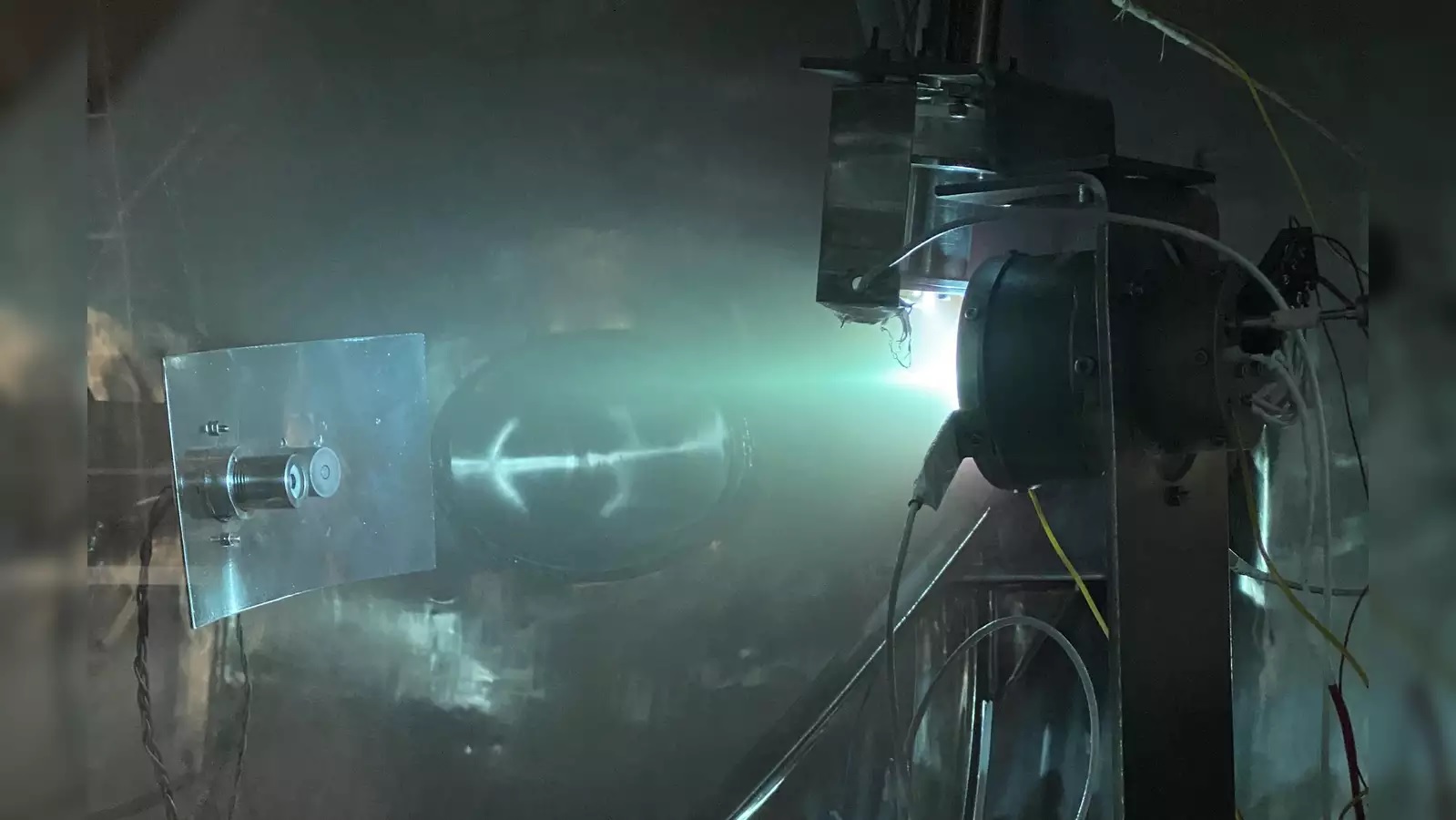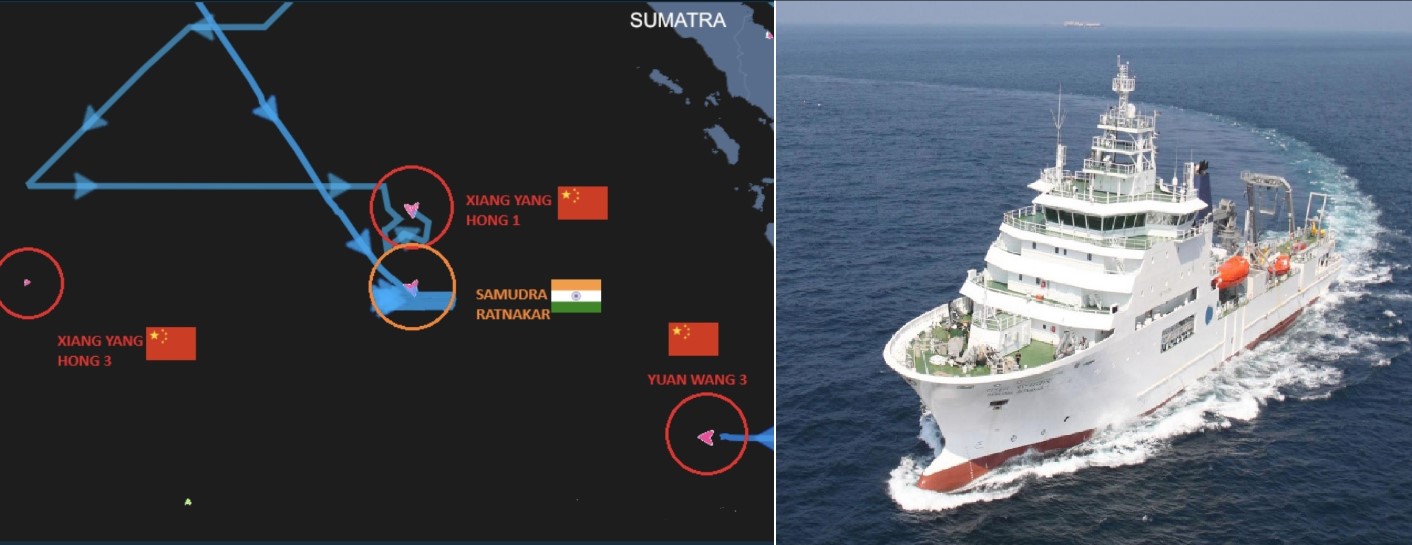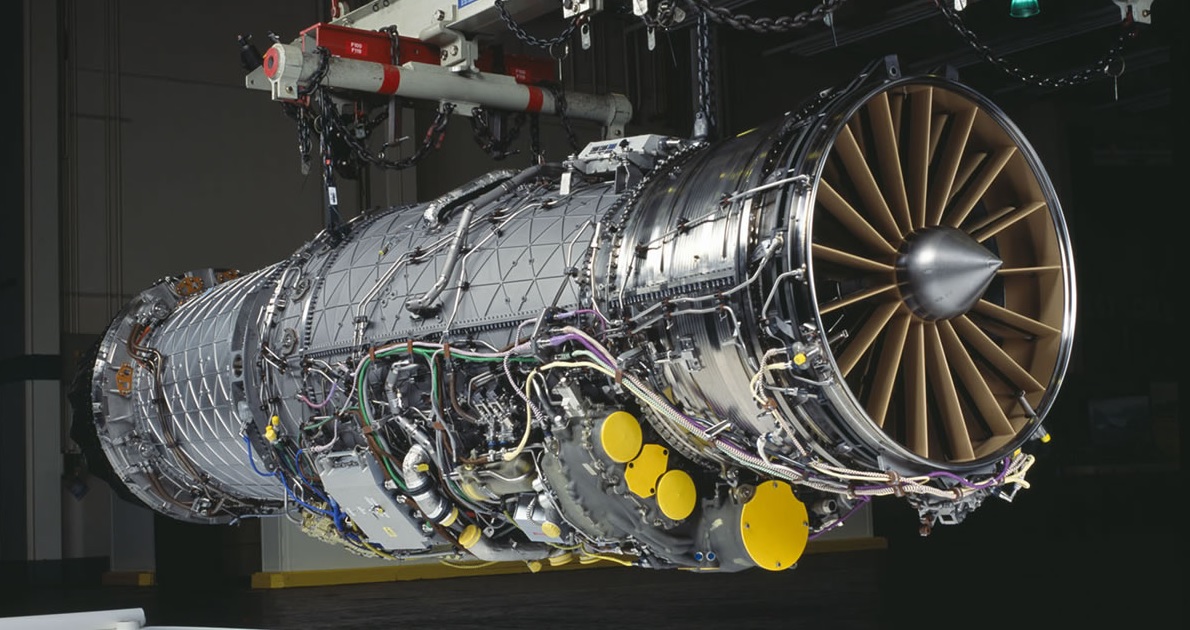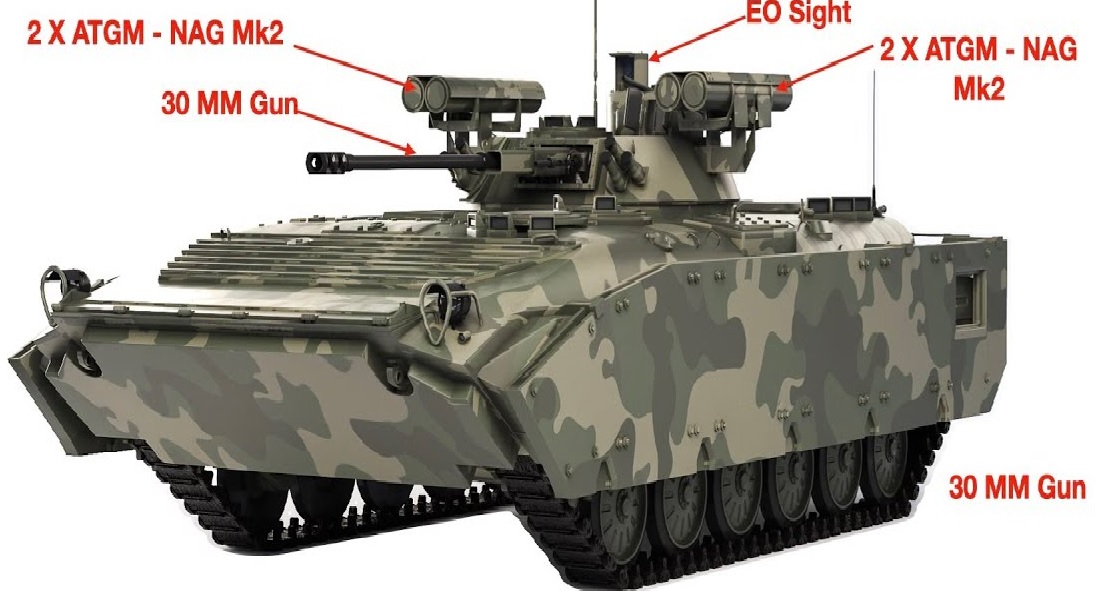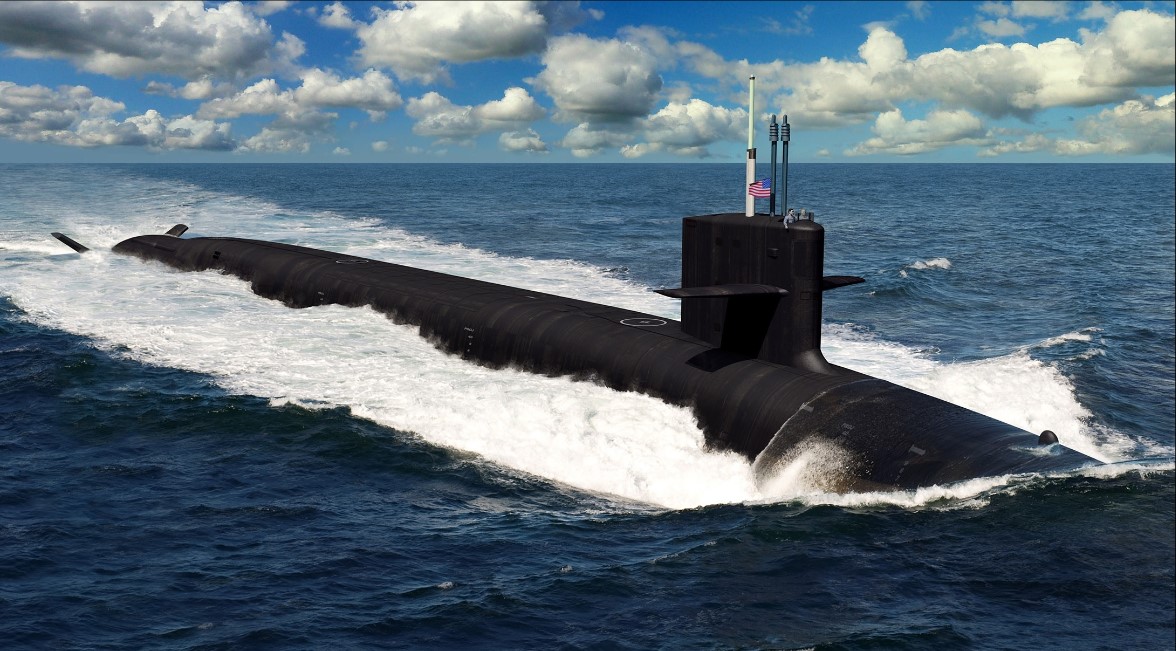World
Defense News ,Germany :- Micropol Fiberoptic, a Swedish company, teams up with Diehl Defence, a German defense technology company, to provide fast and reliable fiber optic communication for the IRIS-T SLM ground-based air defense system. This system is a top-notch defense technology used to protect against airborne threats.Diehl Defence is known for creating advanced defense systems, like the IRIS-T SLM, which is highly effective in combat situations. Micropol Fiberoptic has been working with Diehl Defence for a while now, contributing to the IRIS-T SLM system by supplying the fiber optic communication needed to make it work efficiently.The IRIS-T SLM system has proven its effectiveness, even in intense combat situations, achieving close to a perfect hit rate, even when faced with multiple targets attacking simultaneously.Micropol's role in this collaboration is providing high-quality fiber optic communication products, specifically their FALCON expanded beam products. These products ensure that communication between different parts of the IRIS-T SLM system remains strong, even over long distances and in challenging conditions.To deploy these fiber optic cables, Micropol provides a tactical backpack designed for field use. This backpack makes it easy to lay out and move fiber optic cables in rough environments.Adam Svasek, Regional Sales Manager at Micropol Fiberoptic GmbH, expresses pride in their partnership with Diehl Defence and their contribution to the IRIS-T SLM system.Micropol has over 30 years of experience in developing fiber optic solutions and continuously works with customers to provide the best possible products. Their collaboration with Diehl Defence demonstrates their commitment to finding optimal solutions for defense challenges.
Read More → Posted on 2024-03-26 03:58:07India
Defense News ,India :- The Voltech Group, a company worth Rs 1,000 crore, mostly focuses on testing, commissioning, and maintenance of electrical systems in power plants and other facilities. Now, it plans to grow significantly in the nuclear industry, according to a senior official.Managing Director M. Umapathi stated that the company has been involved in testing and commissioning various power plants, including nuclear ones in India. Specifically, they have worked on projects in Kudankulam, Tamil Nadu.Umapathi is currently attending the ATOMEXPO 2024, a global nuclear power conference and exhibition in Sochi, Russia, organized by Rosatom, a major player in the nuclear power sector. He mentioned plans to collaborate with Rosatom for upcoming projects in multiple countries.With a presence in 40 countries, the Chennai-based Voltech Group boasts a workforce of about 3,500 engineers, with a significant portion in India. Umapathi highlighted this as a unique advantage, as no other company has such a large pool of engineers dedicated to one field.Additionally, the company has expanded its operations to the United States, focusing on testing and commissioning electrical systems in data centers. Furthermore, Voltech Group is set to introduce three new electrical products in the market.
Read More → Posted on 2024-03-26 03:51:08World
Defense News U.S :- Over the past twenty years, Javelin has established itself as a reliable precision weapon system globally, providing defense against various threats. Its integration onto both U.S. and international platforms has increased significantly, showcasing its ability to cater to diverse defense needs across the world.Javelin's integration with unmanned ground vehicles (UGVs) has been particularly successful, enhancing its operational effectiveness both in mounted and dismounted scenarios. According to Andy Amaro, president of the Javelin Joint Venture, this integration extends Javelin's capabilities to a broader range of platforms, offering ground forces a significant advantage on the battlefield.Recently, Javelin participated in the U.S. Army's Project Convergence Capstone 4 (PCC4) exercise, where it demonstrated autonomous remote operations. This successful demonstration underscores the maturity of Javelin's capabilities in remote deployment, paving the way for future opportunities in deploying Javelin from other autonomous platforms.During the PCC4 Phase II exercises at the National Training Center in Fort Irwin, California, Javelin was deployed from two UGVs equipped with the Kongsberg Common Remotely Operated Weapon Station-Javelin (CROWS-J). This marked the first instance of Javelin being deployed from multiple UGVs in a coordinated live fire event, reflecting its readiness for tactical engagement scenarios.The exercise showcased Javelin's ability to engage separate targets at varying ranges using its unique top attack engagement trajectory. The success of the PCC4 exercise highlights Javelin's potential for remote deployment from unmanned platforms, emphasizing its interoperability and potential integration into Joint All Domain Operations (JADO) through unmanned autonomous vehicles.Building on the success of the PCC4 exercise and Javelin's past performance excellence in autonomous operational deployment, the Javelin Joint Venture (JJV) continues to collaborate with the U.S. Army and key international allies to explore further platform expansion opportunities. This ongoing effort aims to capitalize on multiple upcoming integration opportunities, further strengthening defense capabilities globally.Javelin's Reach ExpandsJavelin, a renowned precision weapon system, has seen extensive deployment through unmanned autonomous vehicles. The recent PCC4 exercise is just one example, building upon previous integrations and live demonstrations with various vehicles such as Milrem THeMIS in 2019, Oshkosh EMAV in 2021, and Plasan ATeMM, Cyborg Dynamics Warfighter, and General Dynamics SMET in 2023. These showcases highlight Javelin's adaptability across diverse vehicle platforms.Dave Pantano, Vice President of Javelin Joint Venture and Lockheed Martin Javelin Program Director, emphasizes Javelin's transformative role in the defense industry. By integrating it onto both manned and unmanned platforms, Javelin enhances military capabilities, fostering collaboration for cross-domain operations and ensuring global readiness.A Decade of Javelin's ImpactOver the past twenty years, Javelin has emerged as the preferred precision weapon system for countering threats worldwide. Its integration onto various U.S. and international platforms has steadily increased, demonstrating its ability to provide tailored defense solutions to a global audience.In 2018, the successful integration of CROWS-J onto U.S. Stryker vehicles by the Stryker 2nd Cavalry Regiment marked a significant modernization milestone for the U.S. Army. This integration empowered soldiers to engage targets from within the vehicle, enhancing agility, survivability, and mission effectiveness. Following this success, CROWS-J has been deployed with additional Stryker brigades, with plans for further expansion across all Stryker brigades.Looking beyond national borders, the Australian Army conducted a Javelin live fire demonstration in March 2023, showcasing its integration onto unmanned ground vehicles (UGVs) at Singleton Military Training Area in New South Wales, Australia. These international efforts reflect a commitment to expanding Javelin's integration footprint to support global customer readiness.Growing Demand, Global PartnershipsAs demand for Javelin continues to rise, the Javelin Joint Venture (JJV) is collaborating with strategic international partners to expand its platform integration. This concerted effort aims to meet the increasing demand while ensuring readiness for customers worldwide.In essence, Javelin's versatility and effectiveness are evident in its widespread integration across various platforms, both domestically and internationally. As it continues to evolve and expand its reach, Javelin remains at the forefront of precision defense solutions, safeguarding nations and promoting global security.
Read More → Posted on 2024-03-26 03:44:24Science
History News ,India :- Dr. George Gheverghese Joseph from The University of Manchester has uncovered groundbreaking revelations about the 'Kerala School' and their contributions to mathematics. He points out that the 'infinite series,' a fundamental concept in calculus, was actually identified by the Kerala School around 1350. Surprisingly, this discovery, which predates Sir Isaac Newton and Gottfried Leibnitz by centuries, has often been mistakenly attributed to them.Researchers from The Universities of Manchester and Exeter further reveal that the Kerala School also pioneered the Pi series and utilized it to calculate Pi with remarkable accuracy—up to 17 decimal places.Moreover, there's compelling evidence suggesting that Indian mathematicians shared their discoveries with Jesuit missionaries during the fifteenth century, potentially influencing the development of mathematical thought in Europe.Dr. Joseph emphasizes that while Newton's contributions to calculus remain significant, figures like Madhava and Nilakantha from the Kerala School deserve equal recognition for their discovery of infinite series, a vital component of calculus.However, the neglect of scientific achievements from non-European regions, influenced by historical biases stemming from colonialism, has obscured the Kerala School's contributions. Additionally, the lack of familiarity with the medieval form of Malayalam, the local language of Kerala, where much of the significant mathematical texts were written, has contributed to this oversight.Dr. Joseph also highlights disparities in the standards of evidence required to acknowledge knowledge transmission from East to West compared to the reverse. He suggests that the West's reliance on knowledge exchange from India and the Islamic world during the medieval period is well-documented, yet the contributions from these regions are often undervalued.He points out instances where European Jesuits, with expertise in mathematics and local languages, interacted with Kerala mathematicians, indicating potential knowledge transfer. For example, Pope Gregory XIII's committee, which included mathematician Clavius, sought information on calendar construction from diverse regions, with the Kerala School being a notable resource.Similarly, advancements in navigation during the Age of Exploration spurred the demand for accurate astronomical calculations, an area where Kerala mathematicians excelled.In light of these findings, it's essential to recognize the significant contributions of the Kerala School to the development of mathematics, bridging the gap in our understanding of its global history.Erratum: The University of Manchester acknowledges the significant work of Professor CK Raju in exploring the transmission of Kerala Mathematics to Europe, which should have been recognized in the original news release.
Read More → Posted on 2024-03-25 15:54:15World
Defense News , U.S ,Japan :- In efforts to tackle security threats from China and North Korea, the US military is planning to enhance its command headquarters in Japan, aiming for smoother cooperation with Japan's self-defense forces. This initiative, reported by Kyodo news agency citing diplomatic sources, underscores the growing concerns over regional security.Japan and the United States are also set to take further steps to improve their response capabilities. Tokyo, in a significant move in 2022, decided to acquire the ability to strike enemy bases, even under Japan's war-renouncing Constitution.Additionally, Japan is gearing up to establish a joint headquarters by March 2025 to command its ground, maritime, and air forces. This move, under Prime Minister Kishida's administration, seeks to deepen cooperation between the US military and Japan's joint headquarters.The heightened cooperation between Japan and the US comes amidst escalating tensions fueled by North Korea's missile tests and China's military activities in the South China Sea and the Taiwan conflict. China's increasing military presence around Taiwan, including frequent incursions into its air defense identification zone, has raised alarms in the region.Ahead of talks between Japanese Prime Minister Fumio Kishida and US President Joe Biden in Washington next month, the two countries are expected to review their command and control operations. This visit marks the first such trip by a Japanese leader since 2015.The upcoming discussions between the US and Japan are crucial, especially in light of the defense treaty signed in 1960. The treaty allows the US to establish bases in Japan, ensuring mutual defense in the face of an attack.Over the years, the US and Japan have collaborated closely on various military endeavors, including ballistic missile technology. In 2020, the US approved the sale of 105 F-35 fighters to Japan, further solidifying their defense partnership.However, logistical challenges persist, with the US Indo-Pacific Command headquartered in Hawaii, leading to time zone differences and physical distances hampering efficient interaction between Japanese forces and the US military.US Deputy Secretary of State Kurt Campbell expressed Washington's support for Japan's efforts to bolster its defense capabilities during his recent visit to Tokyo. An announcement related to this cooperation is anticipated following the Biden-Kishida summit, indicating the growing commitment to strengthen defense ties between the two nations.
Read More → Posted on 2024-03-25 15:44:06Science
Science News ,World :- In an exciting development, doctors have successfully transplanted a pig kidney into a person for the first time. This success has researchers hopeful about using animal organs for human transplants, a process called xenotransplantation.The patient who received the pig kidney is Richard Slayman, a 62-year-old man suffering from severe kidney failure. He underwent surgery on March 16 and is recovering well, according to his doctors.The kidney came from a special miniature pig that had undergone 69 genetic changes. These changes were made to prevent rejection of the organ by the recipient's body and to lower the risk of any viruses that the organ might carry.Experts say that, at least in the short term, these transplanted pig organs are safe and work just like human kidneys. Luhan Yang, the CEO of Qihan Biotech in China, and a founder of the company that created the genetically modified pigs, eGenesis in Massachusetts, believes this case shows promising results.The company is now talking with the US Food and Drug Administration (FDA) about planning larger clinical trials. These trials would involve transplanting pig kidneys, hearts for children, and livers that would be connected to the recipient's body externally. Wenning Qin, a molecular biologist at eGenesis, confirms this plan.Hope for Saving Lives: Push for Full-Scale Tests of Animal Organ TransplantsIn the United States, when someone's life is in danger and there's no other way to help them, doctors sometimes use animal organs for transplants. This is called "compassionate use." Now, there's hope that these transplants might become more common.One person who had an animal organ transplant, named Slayman, got approval from the FDA for this special treatment. But Dr. Yang believes that with new positive results, the FDA might allow larger tests with more people. He thinks these transplants could give patients and their families hope and save lives.Using animal organs for transplants could also help solve a big problem: not having enough human organs for everyone who needs them. In the United States alone, nearly 90,000 people are waiting for a kidney transplant. Sadly, over 3,000 people die each year while waiting. Dr. Wayne Hawthorne from the University of Sydney in Australia says that even though more people are donating organs, there's still a huge shortage.Dr. Muhammad Mohiuddin, a surgeon and researcher, is excited about the possibility of more tests. He led the first transplant of a pig's heart into a living person. Dr. Mohiuddin, who also heads the International Xenotransplantation Association, believes that these tests can give us important information about how safe and effective animal organ transplants are.Before, surgeons have already put gene-edited pig hearts into two living people. They've also transplanted modified pig kidneys into people who were declared dead because their brains stopped working. Just recently, surgeons in China put a modified pig liver into a person who was clinically dead and kept it there for ten days. This shows that animal organ transplants might offer hope for many people in need.Dozens of EditsThe surgery to give Slayman a pig kidney lasted four hours, according to Tatsuo Kawai, one of the doctors who did the surgery. Slayman already had a human kidney that someone donated to him in 2018, but it was starting to fail. Because of this, Slayman had to regularly go for dialysis treatment. But he faced more problems and had to visit the hospital often, so doctors thought he could try getting a pig kidney.The pig's kidney given to Slayman had been changed by scientists at a company called eGenesis using a method called CRISPR–Cas9 genome editing. They changed 69 genes in the pig. Monkeys who got pig organs from this company with these changes in their genes lived for months to years. Qin, one of the scientists, believes Slayman's new pig kidney could last just as long, maybe even longer. This is because the changes were made with humans in mind, not monkeys.The changes included taking out three genes that help pigs make three types of sugars on their cells' surface. Our immune system sees these sugars as a sign of an enemy and attacks them. Seven new genes were added to make proteins like those in humans that help stop the body from rejecting the organ.Preventing Viral SpreadScientists have made 59 changes to the genes of pigs to stop viruses from becoming active in the human body. They worry that these viruses might become a problem once inside humans. While there haven't been cases of this happening in living humans or non-human primates who received pig transplants, lab experiments have shown that these viruses can move from pig tissues to human cells and to mice with weak immune systems.The first pig heart that was successfully transplanted into a person had a hidden virus, which might have caused the organ to fail eventually. Before approving such operations, the FDA is concerned about the risk of pig diseases spreading to the recipient. eGenesis regularly tests its pigs for pathogens like porcine cytomegalovirus, which can hide in pigs without causing symptoms.Before the transplant, researchers froze blood samples from the patient, his family, and his surgeons. If the patient gets sick later on, scientists can check these samples to see if they were the source of the illness.The patient will be regularly tested for diseases, and if he shows any symptoms, his family and caregivers will also be checked.These precautions are crucial because a pig might seem healthy, but its germs could still cause problems for someone with a weak immune system. Even if tests show no viruses or bacteria in the pigs before the transplant, there's still a risk they could grow and spread in a person with a compromised immune system. So, there are still many unknowns that scientists are trying to understand.Keeping Kidneys HealthyKidneys do a big job in our bodies. They clean out bad stuff, make pee, and help keep our blood pressure in check. When surgeons fixed up the blood flow to a transplanted pig kidney, it quickly turned pink and started making pee. That's a good sign the transplant worked.Doctors also look at something called creatinine in the blood to check kidney health. High levels of creatinine mean the kidney isn't doing its job of cleaning waste well. Before the transplant, Slayman had high creatinine levels, but by the fourth day after the surgery, it dropped a lot. Doctors hope it'll keep going down to a normal level."It seems like this kidney is working how it should," says Mohiuddin.Slayman might leave the hospital as soon as tomorrow. He's taking medicines to stop his body from rejecting the new kidney, and things are looking good so far. Scientists hope to tweak pig genes so recipients won't need these medicines, which can weaken the body."Before, people said pig organ transplants were a dream. Now, we have someone with a pig kidney—it's amazing!" says Qin.
Read More → Posted on 2024-03-25 15:36:15India
Defense News ,India :- India has announced it will have a military practice near the Andaman and Nicobar Islands soon. They've sent out a Notice to Airmen (NOTAM). This exercise is set to happen on March 29th and 30th, 2024. It will cover an area of 380 kilometers close to the very important Malacca Strait.At the same time, China has its space tracking ship, Yuan Wang 3, in that area. Some experts think India might use this drill to test-fire the BrahMos missile, which is super fast.The BrahMos missiles are already stationed in the Andaman and Nicobar Islands. They are very powerful and could stop China from coming into the Indian Ocean Region during a fight. India uses these missiles as a big part of its defense plan.The Andaman and Nicobar Islands are very important for India's safety. They sit close to the Malacca Strait, which is one of the busiest sea routes globally. So, India needs to be strong there to protect its interests at sea. Doing regular military drills helps India stay prepared and strong in this area.The announcement talks about a military exercise but doesn't say exactly what weapons they'll use. But considering China's ship is there and how important this area is, experts think they might test the BrahMos missiles.
Read More → Posted on 2024-03-25 15:20:18World
Defense News ,UK :- The UK military isn't quite ready to use artificial intelligence (AI) in all its systems, even though many countries are adopting AI for modern warfare.British defense procurement minister James Cartlidge recently talked about this at a defense committee meeting. He said that while the UK military has made progress in using AI in some areas, there's still a lot more to do.Cartlidge mentioned that AI can help the military in many ways, like gathering intelligence and detecting targets. It's also faster at analyzing large amounts of data compared to traditional systems.How the UK Military Uses AICartlidge explained that the UK has started using AI to help with different military projects. For example, they're using AI to develop drones for Ukraine. They've also introduced new AI software at a Royal Naval Air Station. This software helps quickly process data about aircraft maintenance, making it easier to find and fix problems fast.Cartlidge mentioned that investing in AI makes sure that the UK's defensive assets are not only better technologically but also operate more precisely, efficiently, and safely.The British Army has also started using AI to speed up its recruitment process. Now, they can analyze potential recruits' medical documents much faster, reducing the overall application time by 25 percent.AI Around the WorldCartlidge's comments come at a time when many countries are investing more in AI to deal with new threats.For example, Russia is using generative AI for complex cyberattacks, as reported by Microsoft. And China, a major military power, claims to have developed AI technologies for activities like jamming and espionage.Despite these advancements, the UK military is still working on fully integrating AI into its systems. There's recognition that progress has been made, but there's also acknowledgment that there's still more to be done to keep up with the changing landscape of modern warfare.
Read More → Posted on 2024-03-25 15:14:40World
Defense News ,Europe :- Amidst challenges with completing the F-35's Technology Refresh 3 (TR-3) upgrade, Lockheed Martin faces delays in delivery schedules, prompting European nations to consider alternative options. These include borrowing or purchasing aircraft from other F-35 users to mitigate the impact on their defense capabilities.While countries like Norway and the Netherlands, already operating most of their F-35 fleet, may experience less immediate urgency, delays in deliveries to other European customers such as Belgium, Finland, Poland, and Germany could extend the use of legacy fighters. As European nations navigate these challenges, adaptability and proactive measures are crucial in addressing potential disruptions to defense strategies.In the face of evolving security threats, maintaining a robust and modernized defense infrastructure remains paramount for ensuring the safety and security of nations across Europe and beyond.
Read More → Posted on 2024-03-25 15:05:46India
Defense News ,India :- In a groundbreaking achievement for Indian aerospace, NewSpace Research & Technologies (NRT), a Bengaluru-based startup, has completed an unprecedented 24+ hour flight test of its advanced High-Altitude Pseudo-Satellite (HAPS) prototype.This milestone not only showcases the prowess of Indian innovation but also positions India as a frontrunner in the development of extended-endurance unmanned aerial vehicles (UAVs).The solar-powered HAPS SCALED prototype, weighing 80kg and powered by a brushless DC electric motor, soared over ATR Chitradurga, surpassing all expectations and marking a significant leap in technological advancement.Building on this success, NRT is gearing up for the development of its ambitious HAPS Full Scale model, which promises an astounding 90-day airborne mission capability at high altitudes. With an increased maximum take-off weight of 450kg and a payload capacity of 35kg, the larger model represents a monumental leap in UAV capabilities.Before venturing into the full-scale version, NRT plans to conduct further endurance trials with the HAPS SCALED model. These tests aim to push the boundaries of the prototype with a continuous 7-day flight at an altitude of 20km above mean sea level (AMSL), maintaining a cruising speed of 100km/h.The Indian Navy has expressed keen interest in NRT's HAPS technology, recognizing its potential for long-endurance surveillance, communication, and other maritime applications. With an estimated development cost of ₹450 crores for the HAPS Full Scale, the Indian Navy emerges as a major prospective user, underscoring the strategic significance of this innovative aerospace endeavor.
Read More → Posted on 2024-03-25 14:54:26India
Defense News ,India :- India's Minister of External Affairs, S Jaishankar, shared that India and Russia have always had a good relationship. He assured that both countries have consistently looked out for each other's interests. Speaking to the Indian community in Singapore, Jaishankar dismissed any concerns that Russia might be favoring China over India.Jaishankar emphasized the importance of evaluating relationships based on India's perspective. He encouraged reflection on whether Russia has been beneficial or detrimental to India, especially during crucial moments. According to Jaishankar, from his calculations and experiences, Russia has been a positive partner for India.Despite Russia's recent actions, such as the invasion of Ukraine, India's bond with Russia remains strong. India has chosen not to condemn Russia's actions, instead advocating for diplomatic solutions to the crisis.Regarding the upcoming US presidential election and its impact on India's relations, Jaishankar expressed patience. He believes that India can maintain good relations regardless of who becomes the President of the US.Jaishankar's visit to Singapore spans three days, underscoring India's commitment to engaging with its regional partners.
Read More → Posted on 2024-03-25 14:42:39World
Defense News ,France :- France's government has raised its security alert level to the highest point after a deadly attack at a concert hall in Russia. The Islamic State claimed responsibility for the attack. French Prime Minister Gabriel Attal made the announcement, saying they are considering the threat from the Islamic State seriously.President Emmanuel Macron called for an emergency security meeting after the attack in a Moscow suburb killed more than 130 people. The Islamic State group claimed responsibility for this attack.France has experienced several deadly attacks by the Islamic State, including the Bataclan theater massacre in 2015. French soldiers have also fought against Islamic extremists in the Middle East and Africa.France was already on high alert due to the upcoming Paris Olympics and Paralympics. These events are expected to attract millions of visitors. Security concerns are particularly high for the opening ceremony on July 26, which will involve boats on the Seine River and large crowds along the embankments.
Read More → Posted on 2024-03-25 14:35:43World
Defense News ,Poland :- Poland has expressed its concern after a Russian missile flew into its airspace while targeting towns in western Ukraine. The incident occurred during Russia's intensified attacks on Ukraine.The Polish government demanded an explanation from Moscow, urging them to stop the airstrikes in Ukraine and focus on their internal issues. Foreign Ministry spokesperson Pawel Wronski emphasized the need for Russia to end the conflict and prioritize peace.Furthermore, Foreign Minister Radoslaw Sikorski announced that the Russian ambassador would be summoned to provide clarifications regarding the breach.In response to Russia's aggression towards Ukraine, Poland activated all its air defense and air force systems. Defense Minister Wladyslaw Kosiniak-Kamysz assured that the missile would have been intercepted if it posed a threat to Polish territory.According to the Polish army, the cruise missile, traveling at high speed and altitude, crossed about two kilometers into Polish territory before returning to Ukraine. It flew over the village of Oserdow in Lublin province for 39 seconds, closely monitored by military radar.The Polish army remains vigilant, constantly monitoring the situation in Ukraine to ensure the security of Polish airspace. This incident follows a similar occurrence in December 2023 when another Russian missile breached Polish airspace.Previously, in November 2022, a Ukrainian air-defense missile accidentally landed in Poland, causing casualties. Initially, there were concerns that such incidents could escalate the conflict and involve NATO, of which Poland is a member.Poland's demand for answers underscores the seriousness of the situation and the need for diplomatic resolution to the ongoing conflict between Russia and Ukraine.
Read More → Posted on 2024-03-25 14:31:31World
Defense News ,Israel :- The soldiers from Israel who are fighting in Gaza have a special tool called the "Rooster." This tool helps them explore the underground tunnels that the Hamas group built under Gaza.The "Rooster" is made by a company called Robotican, which is from Israel. This company makes drones and robots.The Israeli soldiers, known as the Israeli Defence Forces (IDF), use the "Rooster" drone to explore the tunnels under Gaza. These tunnels make up a huge underground network, about 500 kilometers long, which Hamas built.The "Rooster" drone is not just used in Gaza. Military groups around the world also use it. It is designed for special units and commando teams for missions where they need to gather information, keep watch, and fight tactically.Robotican, the company that makes the "Rooster," says it's different from other drones. It's special because it can do two things: fly in the air like a normal drone and also move on the ground like a robot. This makes it really useful for exploring underground places.The company says the "Rooster" is a big improvement in how soldiers can gather information, stay safe, and do their job well. It was made especially for soldiers who fight in difficult places and have special tasks to do.The "Rooster" can work for up to ninety minutes at a time. When it's flying, it can stay in the air for about fifteen minutes, and when it's rolling on the ground, it can go for about forty minutes. It's made to be able to switch between flying and rolling easily, which means it can go anywhere, no matter the terrain.This special drone is really good at moving around. It can roll over rough ground and fly over things in its way, like windows or furniture. And it's built to be strong, with a cage around it to protect it from getting damaged if it bumps into things while flying.Soldiers can add different tools to the "Rooster" depending on what they need for their mission. They can attach things like sensors to measure things like radiation, gas, or temperature. This helps them gather information and stay safe while they're doing their important work.
Read More → Posted on 2024-03-25 06:52:19India
Defense News ,India :- In good news for India's army upgrade plans, a lab called the Armament Research and Development Establishment (ARDE), which is part of the Defence Research and Development Organization (DRDO), is working on a lighter version of a powerful artillery gun called the Advanced Towed Artillery Gun System (ATAGS).This new gun is a smaller version of the 155mm/52 calibre howitzer and is made specifically to meet the Indian Army's needs. They want a next-generation Towed Gun System (TGS) that weighs less than 15 tons.The original ATAGS is already known for its strength and performance on the battlefield, but it's quite heavy, about 18 tons. To make it easier to move around and deploy, DRDO is creating this lighter version, which will still pack a punch but will be easier to transport.The goal is to keep the powerful features of the ATAGS while making it more advanced with new technology. DRDO wants to make sure it fits perfectly with the Indian Army's requirement to move quickly across different types of land.The Indian Army has ordered 400 of these new Towed Gun Systems to upgrade its artillery forces and deal with new security challenges. Even though they're also getting 307 of the heavier ATAGS, they need the lighter version to meet their requirements and plan for the future.There could be a big demand for these Towed Gun Systems, possibly up to 1200 units, which is great news for India's defense industry.This lighter ATAGS will be up against other similar guns, like the Adani-Elbit ATMOS howitzers. It's crucial for India to have the most advanced technology in its defense, especially in the competitive world of defense deals.
Read More → Posted on 2024-03-25 06:43:54Space & Technology
Space News ,World :- Bellatrix Aerospace has developed new microwave plasma thrusters called JAL 5000. These thrusters use water as fuel and are available for satellites weighing over 1,000 kg.The JAL series of Microwave Plasma Thrusters offer great power compared to other electrical propulsion systems. They have four times more efficiency than traditional chemical propulsion systems. These thrusters are not only powerful but also cost-effective, reliable, and easy to handle, making them perfect for missions in Geostationary Orbit (GEO). Bellatrix offers these thrusters even at power levels greater than 5kW.Specifications of JAL 5000:Thrust: 300 millinewtonsPower: 5000 wattsSpecific Impulse: 1050 secondsOperational Life: Over 20,000 hoursPropellant Cost: Zero
Read More → Posted on 2024-03-25 06:39:06India
Defense News ,India :- India has sent its research vessel, RV Samudra Ratnakar, to the waters off its eastern coast. This move places it near two Chinese survey ships. Tensions have risen because a Chinese military survey ship, Yuan Wang 3, is also operating in the same area.The RV Samudra Ratnakar is a special ship used for studying oceans. It belongs to the Geological Survey of India (GSI). People think India is sending this ship to counter China's survey work.China's ships, XIANG YANG HONG 01 and XIANG YANG HONG 03, are with Yuan Wang 3. They are possibly tracking ballistic missiles. This worries India because these ships are close to important places for India.Though India hasn't officially said why it sent RV Samudra Ratnakar, it's likely trying to stop the Chinese ships from collecting data.What RV Samudra Ratnakar Can DoThis ship is quite advanced. It was made in South Korea by Hyundai Heavy Industries. Here are its main features:It can stay at sea for up to 45 days at a time.It has room for 73 people, including 25 scientists who study Earth.It's equipped with advanced tools like:Positioning Systems (to know where it is)Sonar Systems (to see under the sea)Seismic Equipment (to study movements under the seabed)Tools to measure magnetism and gravityA remote-controlled underwater vehicle (to explore deep areas)Tools to take samples from the seaA system to manage all the data collectedWhat This Means StrategicallyThis situation shows how India and China are not getting along, especially in the Indian Ocean, which is very important.It's a sign that both countries are competing for resources and power in this area.India wants to show that it's also a big player in the Indian Ocean and can protect its interests.India's decision to send RV Samudra Ratnakar to the waters near the Chinese survey ships is significant. It demonstrates India's capability to respond to activities that it perceives as a threat to its strategic interests. With tensions simmering between India and China, such moves can have broader implications for regional dynamics in the Indian Ocean. As both nations continue to assert their presence and compete for influence, developments like these highlight the complexities of geopolitics in the region.
Read More → Posted on 2024-03-25 06:32:47India
Defense News ,India :- India is making a big move in the world of aerospace. The country is getting ready to produce its own fighter jet engines through a deal between General Electric (GE) and Hindustan Aeronautics Limited (HAL). This deal will allow India to build engines for its LCA Tejas MK-2 fighter jets. The cost of this deal is expected to be less than a billion dollars for 99 engines. This information comes from top officials in India's Defense Ministry, although the final price is still being negotiated.This deal is significant because it will give India access to advanced military technology. Currently, only a few countries, like the US, Russia, and France, have this capability. The discussions for this deal began back in 2012 when India's Defense Research and Development Organisation (DRDO) started talking with GE about transferring the technology for GE F414-INS6 engines. These engines are needed for India's LCA MK-2 project, which aims to replace old fighter jets in the Indian Air Force.Initially, the US agreed to transfer only 58% of the technology, but now they've agreed to 80%. This means that more of the engine manufacturing process will happen in India. This is a big step because it increases India's self-reliance in producing fighter jets. Additionally, due to inflation over the years, the cost of the deal has gone up. However, with the guidance of India's Defense Minister Rajnath Singh, the agreements with the US have been successfully signed.So, what does India gain from this deal? Firstly, the technology transfer from GE is unprecedented. It involves critical military technology that has never been shared with any other country at this scale. This shows the trust that the Biden administration has in India. The technology includes things like special coatings to protect against corrosion and erosion, as well as advancements in turbine blade and nozzle guide vane manufacturing.Comparing negotiations between India and the US in 2012 and 2023 reveals that GE has agreed to transfer more technology this time around. This includes 11 key technologies that will significantly boost India's capabilities in aerospace manufacturing. India's Defense officials believe that this deal will enhance the performance of their fighter jets, improve maintenance efficiency, and reduce turnaround time for repairs.HAL, the Indian aerospace company, is expected to start producing LCA MK-2 jets in about three years. This will further strengthen India's defense capabilities. The deal will also contribute to India's goal of becoming self-reliant in manufacturing fighter jets. It will support other ongoing efforts in developing military and civilian aircraft.The manufacturing of the engines will largely happen in India, except for some small components. The Indian Air Force plans to order between 120 to 130 LCA MK-2 jets, which will further boost the country's defense capabilities.The GE-HAL aerospace deal marks a significant milestone for India's defense industry. It not only enhances India's self-reliance but also paves the way for future advancements in aerospace technology. With this deal, India takes a giant leap towards achieving its goal of manufacturing world-class fighter jets domestically.
Read More → Posted on 2024-03-25 06:16:28India
Defense News ,India :- India has revealed initial images of its next anti-tank missile vehicle, the NAMICA MK2. This new version shows a shift in focus. While it still excels at destroying tanks like its predecessor, the MK2 is designed to be more versatile on the battlefield.What is NAMIC MK2 ?The NAMICA MK2, which stands for Nag Missile Carrier Mark 2, is an Indian tracked anti-tank guided missile (ATGM) launcher vehicle currently under development by the Defence Research and Development Organisation (DRDO). It is an upgrade to the NAMICA (Nag Missile Carrier) which is based on a stretched BMP-2 chassis. Although detailed information on the NAMICA MK2 remains limited due to its ongoing developmental phase, it is anticipated to feature several enhancements compared to its predecessor:Extended Range and Enhanced Precision: The NAMICA MK2 is projected to boast a longer firing range and heightened accuracy in comparison to the original model. This advancement may stem from the incorporation of a new fire control system and state-of-the-art optics.Augmented Crew Protection: Expectations point towards improved crew protection mechanisms in the NAMICA MK2, likely including upgraded armor and a more sophisticated active protection system (APS).Enhanced Mobility: The NAMICA MK2 could potentially leverage a more potent engine or refined suspension system, resulting in superior maneuverability across diverse terrains.Advanced Electro-Optical Systems: Anticipated to be outfitted with cutting-edge electro-optical sights, such as a thermal imager and laser rangefinder, the NAMICA MK2 is poised to enable effective operations in various lighting conditions, including day, night, and low-light scenarios.Although specific specifications for the NAMICA MK2 have not been officially disclosed due to its developmental status, insights gleaned from open-source channels offer some anticipated details:Chassis: Upgraded BMP-2 chassisArmament: 12 Nag anti-tank missiles (8 ready to fire, 4 in reserve)Crew: 4 personnelWeight: Approximately 14.5 tonnes (combat weight)Engine: Enhanced diesel engine (exact specifications remain undisclosed)Maximum Speed: Exceeding 60 km/h (on road)Water Speed: Approximately 7 km/hChanges in WeaponsThe biggest change is in its main weapons. The MK1 had six missile launchers for NAG (Fire and Forget) anti-tank guided missiles. But the MK2 has only four of these launchers. However, it makes up for this by adding a 30mm cannon. This cannon can target not only tanks but also lighter armored vehicles, infantry, and even fortifications more effectively.Evolution of RoleThis change in weapons suggests that the NAMICA MK2 might have a different role on the battlefield. While it's still great at fighting tanks, the addition of the 30mm cannon means it can handle other tasks too. This flexibility allows it to play a more active role in combined operations, where it might need to deal with various threats.Building on a Proven BaseThe NAMICA MK2 still uses the reliable BMP-2 chassis, known for its ability to move well in different terrains. Like the MK1, the passenger compartment of the BMP-2 has been removed. This change likely makes room for more missile reloads, ensuring the MK2 keeps its strong anti-tank capability.What This MeansThese early designs show that the NAMICA MK2 is making progress in its development. By focusing on versatility while keeping its anti-tank power, it could become an important asset in future battles involving armored vehicles. Military experts are likely to keep a close eye on its development as it gets ready to join the Indian armed forces.
Read More → Posted on 2024-03-25 06:10:30India
Defense News ,India :- India's navy made a big move on Friday by sending out 11 regular submarines all at once, marking a huge moment for the Navy in 30 years.This action is quite different from what we've seen in the last 20 years. During that time, the submarine fleet faced problems like decreasing numbers, accidents, and submarines being written off.One source, who has served for over 25 years, said, "This is a very important moment for us. In all my years in the Navy, I haven't seen so many submarines deployed at once. Usually, we didn't have this many submarines available for operations because many were being repaired or upgraded."According to sources in the defense sector, the last time India had such a strong submarine fleet was in the early 1990s. Back then, the Navy had 8 Kilo-class submarines, four HDWs, and four Foxtrot submarines from Russia."But since then, the submarine fleet has faced many challenges. Even the delivery of Scorpene submarines was delayed," another source mentioned.Currently, India has 16 regular submarines in operation, including five Scorpene class (from France), four HDWs (from Germany), and seven Kilo-class (from Russia). Another Scorpene class submarine is yet to be officially commissioned.Although India will have 17 regular submarines next year, sources point out that this might not translate to actual operational capability."What matters more is how many submarines are available for operation. Scorpene submarines are new, so they are more available. Next are the German HDWs, which are reliable and perform well. These submarines can serve for another 10-15 years," the second source explained, highlighting the challenges the Navy faces with its submarine fleet.The source added that while India initially had 10 Kilo-class submarines, it now only has seven."The Kilo submarines are good, but their availability has decreased. They've been upgraded, but they won't last as long as the HDWs. Most of them were commissioned in the 1980s, and one has already been decommissioned. Another was given to Myanmar after being refitted. The third one was new, but we lost it in an accident in 2013," the source noted.This means that the submarine fleet will continue facing challenges.India plans to acquire three more Scorpene-class submarines, but this process will take time from signing contracts to delivery, sources said.The Navy's plan to buy six more advanced submarines with better technology has been delayed for over a decade. The chances of the first one being delivered by 2030 are slim, according to sources.
Read More → Posted on 2024-03-25 05:55:54Search
Top Trending
-
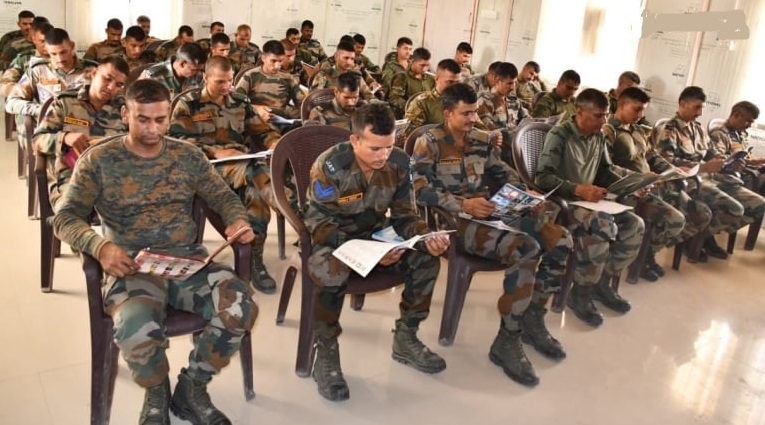 Agneepath Scheme replaced with Sainik Samman Scheme 2024, Defence Minister Rajnath Singh Relaunched Agniveer Scheme
Agneepath Scheme replaced with Sainik Samman Scheme 2024, Defence Minister Rajnath Singh Relaunched Agniveer Scheme
-
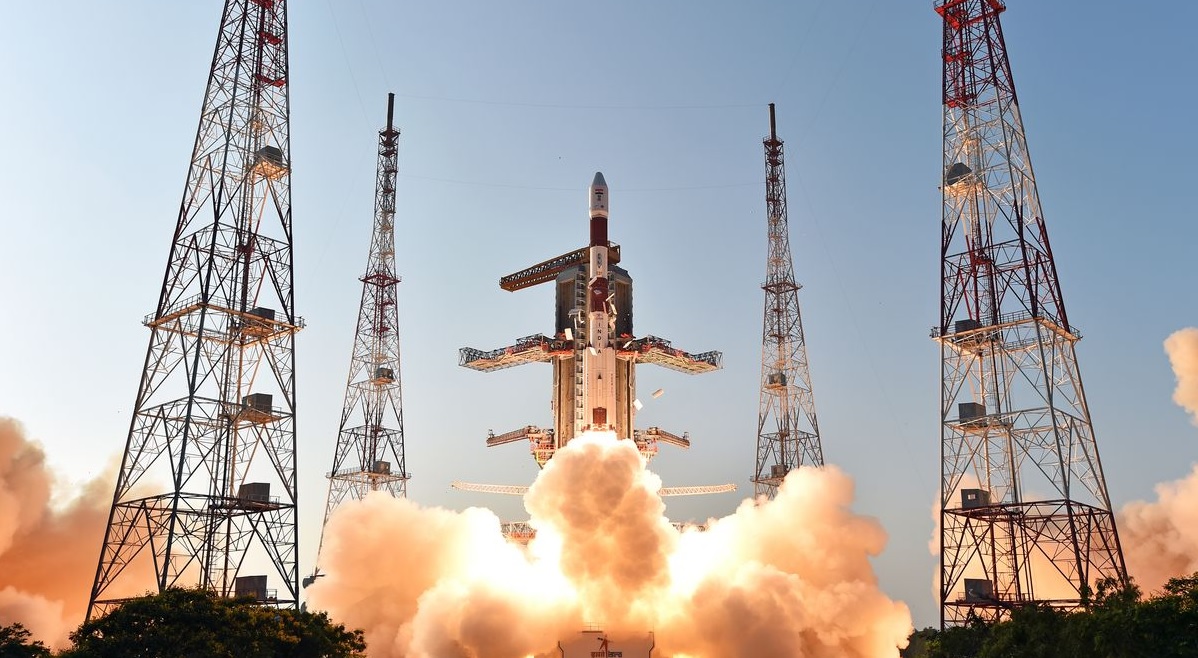 Isro Draws up Ambitious Plan for 2024, says will Launch at Least 12 Missions
Isro Draws up Ambitious Plan for 2024, says will Launch at Least 12 Missions
-
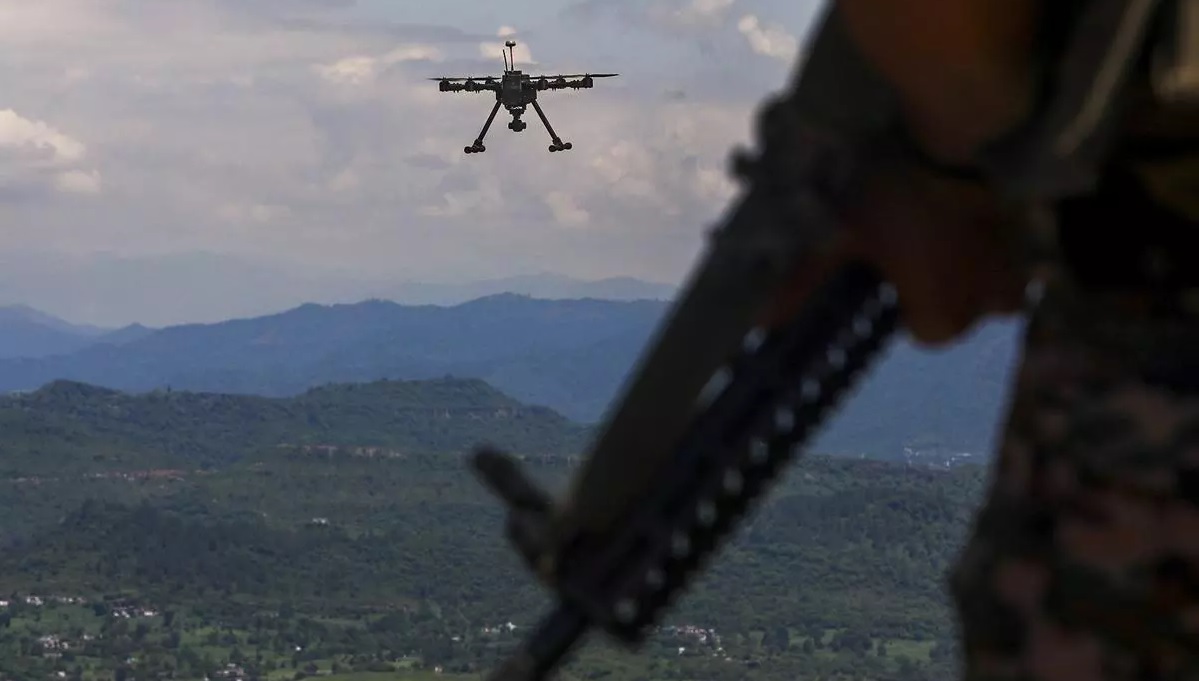 India's Defence Ministry Warns Against Chinese Parts in Military Drones Amid Security Concerns
India's Defence Ministry Warns Against Chinese Parts in Military Drones Amid Security Concerns
-
 China’s Super Radar Detects Mysterious Plasma Bubble Over Giza Pyramids
China’s Super Radar Detects Mysterious Plasma Bubble Over Giza Pyramids
-
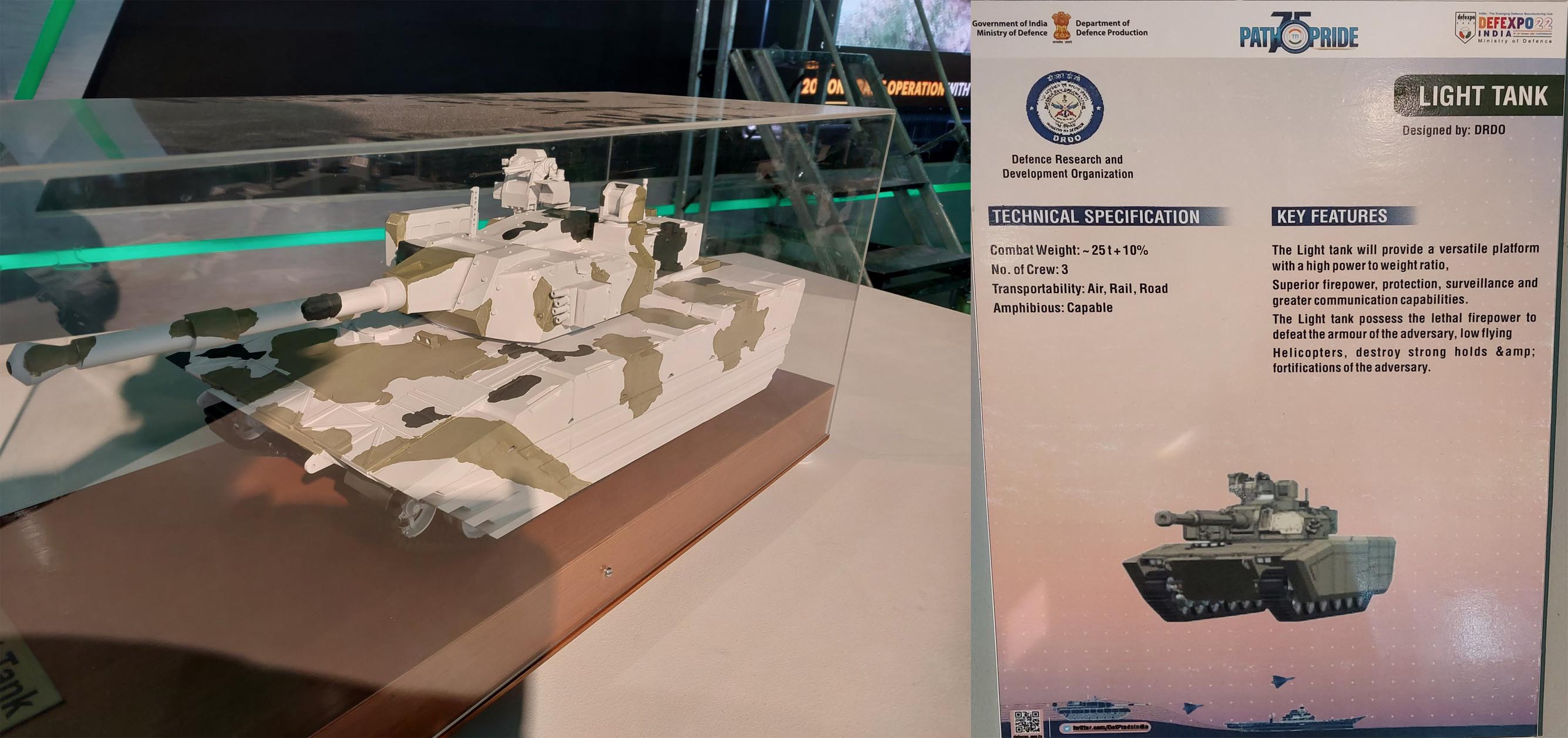 German Engines Available Now But India Chooses American Power Plants for Entire Zorawar Light Tank Project
German Engines Available Now But India Chooses American Power Plants for Entire Zorawar Light Tank Project
-
 Pakistan Announces 15% Increase in Defence Budget for 2024-25 Amid Economic Crisis
Pakistan Announces 15% Increase in Defence Budget for 2024-25 Amid Economic Crisis
-
 India's Indigenous Kaveri Engine Program with New Focus on Thrust and Performance
India's Indigenous Kaveri Engine Program with New Focus on Thrust and Performance
-
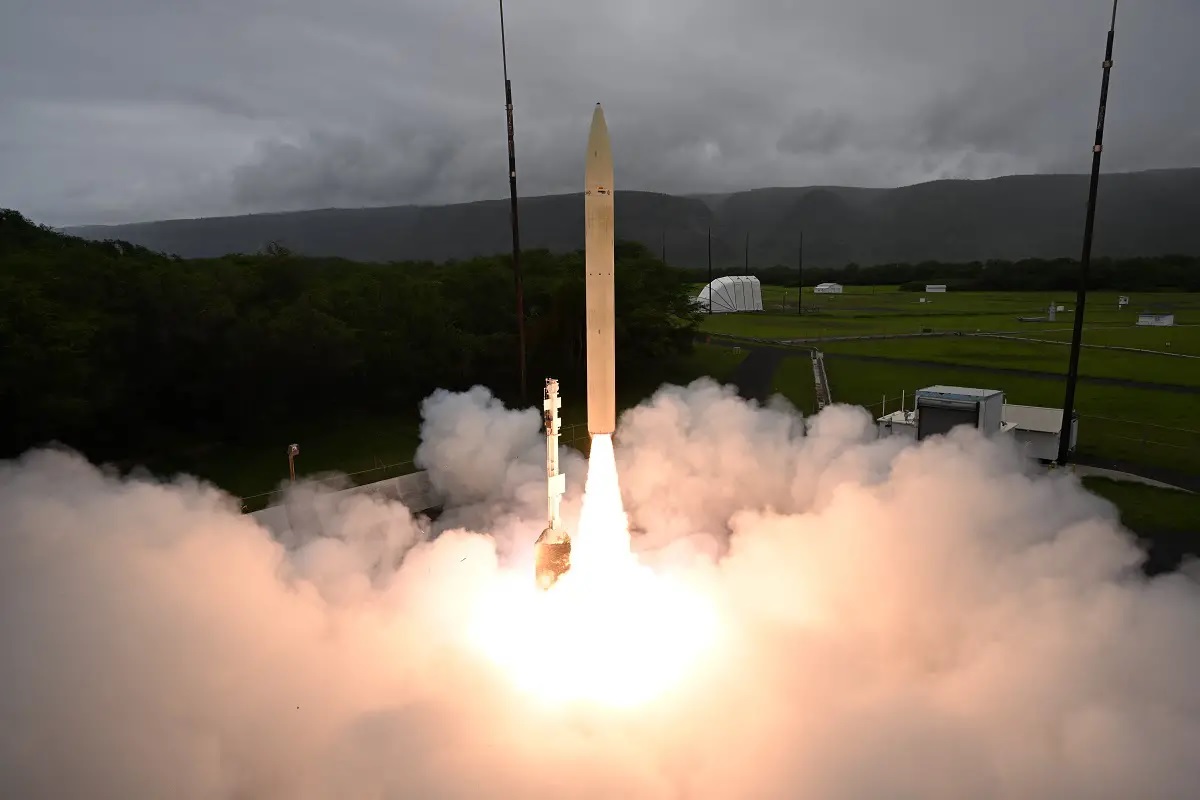 Successful Hypersonic Missile Test by U.S. Department of Defense
Successful Hypersonic Missile Test by U.S. Department of Defense
Top Trending in 4 Days
-
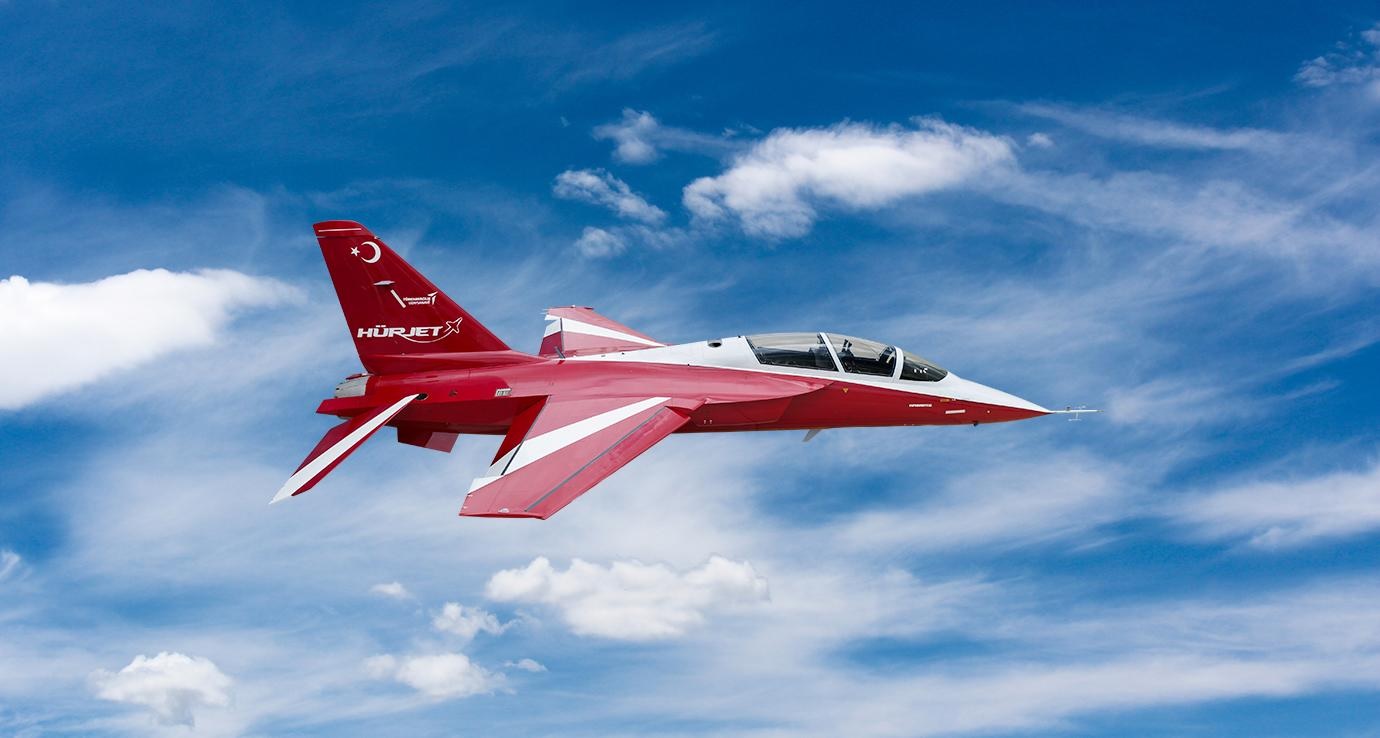 Turkey Seeks US Approval to Acquire GE Engine for Hurjet Fighter Jet
Turkey Seeks US Approval to Acquire GE Engine for Hurjet Fighter Jet
-
 Earth will Get a Second Moon Temporarily This Month—But It Won’t Stay Long
Earth will Get a Second Moon Temporarily This Month—But It Won’t Stay Long
-
 Satellite Tracker Captures Rare Images of Secret U.S. Spy Satellites
Satellite Tracker Captures Rare Images of Secret U.S. Spy Satellites
-
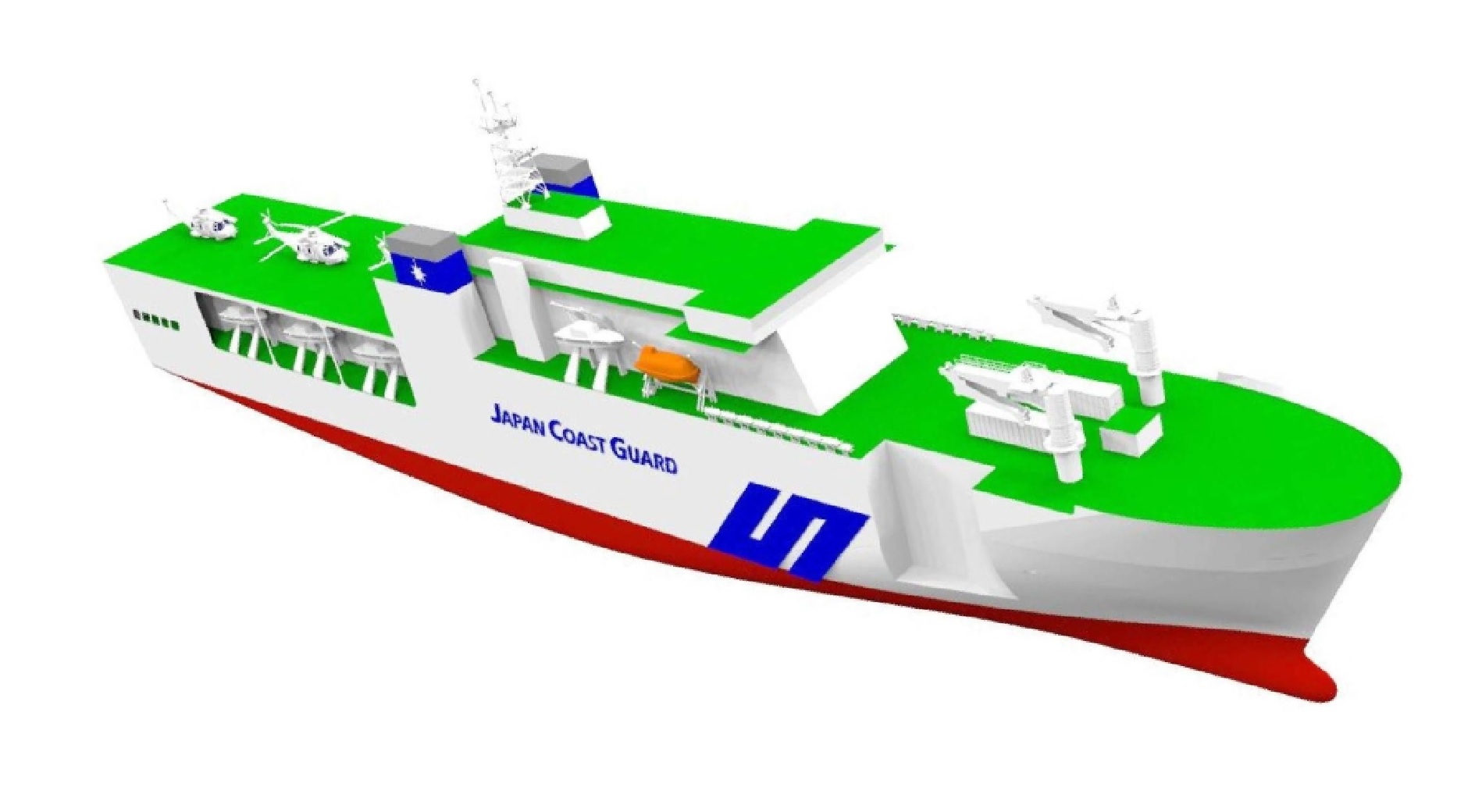 Japan Coast Guard to Build its Largest Patrol Vessel Ever: A 30,000-Ton Maritime Giant
Japan Coast Guard to Build its Largest Patrol Vessel Ever: A 30,000-Ton Maritime Giant
-
 TEJAS MK-1A Fighter Jet Delivery Delayed by Danish Export Blacklist: HAL’s Race to Indigenize Critical Component
TEJAS MK-1A Fighter Jet Delivery Delayed by Danish Export Blacklist: HAL’s Race to Indigenize Critical Component
-
 GE to Retain Key F-414 Engine Technology in Transfer Deal with India: What This Means for HAL and Indigenous Production
GE to Retain Key F-414 Engine Technology in Transfer Deal with India: What This Means for HAL and Indigenous Production
-
 India's Next Leap in Space: Cabinet Approves Development of Next-Gen "SOORYA" Satellite Launch Vehicle
India's Next Leap in Space: Cabinet Approves Development of Next-Gen "SOORYA" Satellite Launch Vehicle
-
 Leidos’ Enduring Shield System Successfully Intercepts Drone and Cruise Missile in Major Flight Test
Leidos’ Enduring Shield System Successfully Intercepts Drone and Cruise Missile in Major Flight Test
